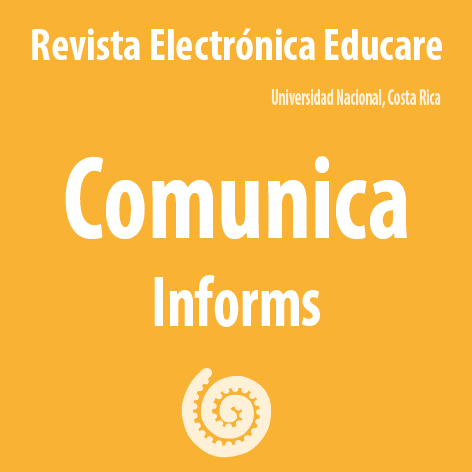Incidence Factors of Negative Environmental Behavior towards the Swamps of Bañó and Los Negros
DOI:
https://doi.org/10.15359/ree.19-3.6Keywords:
Environmental deterioration, synergy, poverty, education, environmental managementAbstract
The purpose of this article is to determine the factors that are influencing the environmentally negative behavior of the inhabitants of Bañó and Los Negros towards these wetlands. For this, a questionnaire was designed, validated by a panel of experts, and implemented. Based on a population of 645 households, we used two types of sample designs –systematic and random– to implement the research instrument. In addition to their respective statistical analysis, a content analysis was carried out with the secondary information collected using index cards. Factors such as low education, scarce employment opportunities, and low income per household have a direct impact on the deterioration of these wetlands. Almost 50% of the population living in the wetlands has not completed basic education. Thus, the possibilities to reflect on the actions done by people against the water mirrors are poor, especially when family incomes are very low (53% of the families receive incomes of less than COL$ 10,000 a day). The scarce organization of the communities has prejudiced the development of joint activities between the neighboring communities of the wetlands, as well as the achievement of common goals. Furthermore, the ineffectiveness of local and national environmental authorities has contributed to the degradation of ecosystems due to an inefficient environmental management over the years. Wetlands are the main source of natural resources for these people and the permanence of such communities in the territory is directly related to the wetlands’ conservation. The synergy of the above factors has unleashed environmental problems that have resulted in the reduction of the ecological capacity of these wetlands and the deterioration of environmental conditions in the area of study.
References
Álvarez, P. y Vega, P. (2009). Actitudes ambientales y conductas sostenibles. Implicaciones para la educación ambiental. Revista de Psicodidactica, 14(2), 245-260. Recuperado de http://www.redalyc.org/pdf/175/17512724006.pdf
Chacón, M. D. (2010). El desarrollo comunitario. Revista Innovación y Experiencias Educativas, 29, 1-11. Recuperado de http://www.csi-csif.es/andalucia/modules/mod_ense/revista/pdf/Numero_29/M_DOLORES_CHACON_1.pdf
Colín, L. (Julio-Septiembre, 2003). Deterioro ambiental vs. desarrollo económico y social. Boletin IIE. Recuperado de http://www.iie.org.mx/boletin032003/art2.pdf
DANE. (18 de abril de 2013). Pobreza monetaria y multimensional en Colombia 2012. Boletín de Prensa. Recuperado de http://www.dane.gov.co/files/investigaciones/condiciones_vida/pobreza/boletin_pobreza_2012xx.pdf
Galarza, E. y Gómez, R. (s. f.). Análisis económico de los problemas ambientales urbanos. Recuperado de http://info.worldbank.org/etools/docs/library/112219/peru/docs/ModuloIII/Galarza%20Gomez%20An%E1lisis%20Medio%20Ambiente.pdf
García, L., Figueredo, L. y Gómez, C. (Mayo, 2013). Desarrollo e implementación de un programa de educación ambiental “proyecto comunitario” para concientizar a la población de Lagos de Moreno. Revista Pistas Educativas, 101, 198-206. Recuperado de http://pistaseducativas.itc.mx/wp-content/uploads/2013/06/18-GARCIA-PE-101-198-206.pdf
Hernández, P. J. (2006-2007). Educación y desarrollo comunitario: Dialogando con Marco Marchioni. Cuestiones pedagógicas, 18, 285-300. Recuperado de http://institucional.us.es/revistas/cuestiones/18/19%20educacion%20y%20desarrollo.pdf
Holahan, C. J. (1991). Psicología ambiental: Un enfoque general. México: Limusa.
Hwang, Y.-H., Kim, S.-I y Jeng, J.-M. (2000). Examining the Causal Relationship Among Selected Antecedents of Responsable Environmental Behavior [El examen de la relación causal entre antecedentes seleccionados de comportamiento ambiental responsable]. The Journal of Environmental Education, 31(4), 19-25. doi: http://dx.doi.org/10.1080/00958960009598647
Instituto Geográfico Austin Codazzi. (1994). Fotografía aérea de las Ciènagas de Bañó y Los Negros. Bogotá: Autor.
Martínez, R. (Enero-Junio, 2010). La importancia de la educación ambiental ante la problemática actual. Revista Electrónica Educare, 14(1), 97-111. Recuperado de http://www.redalyc.org/pdf/1941/194114419010.pdf
Meadows, D., Randers, J., Meadows, D. y Behrens, W. (1972). Los límites del crecimiento. New York: Editorial Signet Books.
Mori, M. (2008). Una propuesta metodológica para la intervención comunitaria. Liberabit, 14, 81-90. Recuperado de http://www.scielo.org.pe/pdf/liber/v14n14/a10v14n14.pdf
Downloads
Published
How to Cite
Issue
Section
License
1. In case the submitted paper is accepted for publication, the author(s) FREELY, COSTLESS, EXCLUSIVELY AND FOR AN INDEFINITE TERM transfer copyrights and patrimonial rights to Universidad Nacional (UNA, Costa Rica). For more details check the Originality Statement and Copyright Transfer Agreement
2. REUTILIZATION RIGHTS: UNA authorizes authors to use, for any purpose (among them selfarchiving or autoarchiving) and to publish in the Internet in any electronic site, the paper´'s final version, both approved and published (post print), as long as it is done with a non commercial purpose, does not generate derivates without previous consentment and recognizes both publisher's name and authorship.
3. The submission and possible publication of the paper in the Educare Electronic Journal is ruled by the Journal’s editorial policies, the institutional rules of Universidad Nacional and the laws of the Republic of Costa Rica. Additionally, any possible difference of opinion or future dispute shall be settled in accordance with the mechanisms of Alternative Dispute Resolution and the Costa Rican Jurisdiction.
4. In all cases, it is understood that the opinions issued are those of the authors and do not necessarily reflect the position and opinion of Educare, CIDE or Universidad Nacional, Costa Rica. It is also understood that, in the exercise of academic freedom, the authors have carried out a rogorous scientific-academic process of research, reflection and argumentation thar lays within the thematic scope of interest of the Journal.
5. The papers published by Educare Electronic Journal use a Creative Commons License:













 The articles published by Educare Electronic Journal can be shared with a Creative Commons License:
The articles published by Educare Electronic Journal can be shared with a Creative Commons License: 



